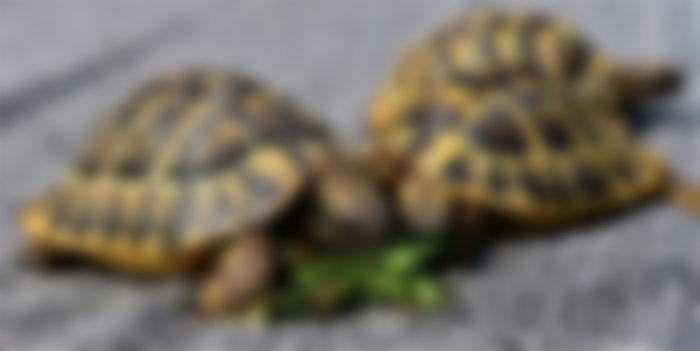In species living in temperate climates (forest / land turtles), the mating season is in spring and autumn. In species that live in tropical and subtropical areas, mating time depends on humidity.
After mating and fertilization, the female turtle begins to look for a suitable place to lay eggs. So, there is a very short period when the egg is in the turtle. The turtle first begins to feel and scratch the ground with its forelegs with the tip of its jaw. The female walks around and tests the ground looking for the most suitable place to lay eggs with the best humidity, soil temperature and sunshine. The holes dug in the garden mean that the female was already trying to lay her eggs, but was hindered so she failed. Leave the turtle alone and ensure its peace, and it is especially important to temporarily remove the male so that he does not bother her when laying because in captivity sometimes there is not enough space as in nature to hide from him. When it finds a sheltered, sun-exposed place in softer soil, the turtle begins to dig a hole with its hind legs. It lays 3 - 15, usually 6 - 8 white oval or round eggs, the size of pigeons. The whole process of laying eggs, from the beginning of digging, laying and burying takes about 3 hours. After the turtle fills the hole, her maternal worries end. Turtle eggs stay in the ground for a long time.

Ideally, incubation lasts between eight and ten weeks (60 to 90 days), and the pups emerge in September. The lower the air temperature, the longer the incubation lasts. The ideal temperature for incubation is 30 s- 31.5 degrees Celsius and in Rome conditions young of different sexes usually hatch. Sometimes not all cubs go outside at the same time, some go out a day later. When they hatch, they are 30-40 mm in size and weigh 6-8 g, left to their own devices, but they are very active and lively and immediately ready for independent living. At the same moment, they start moving, and after a couple of hours, ie days, their armor straightens and becomes firmer every day. They grow slowly and reach the size of their parents only in 5 to 7 years.
